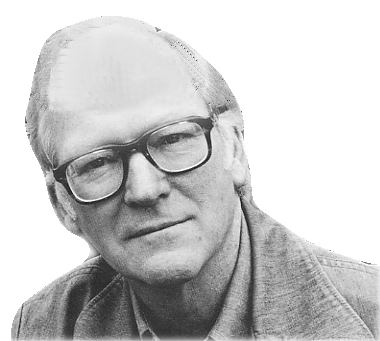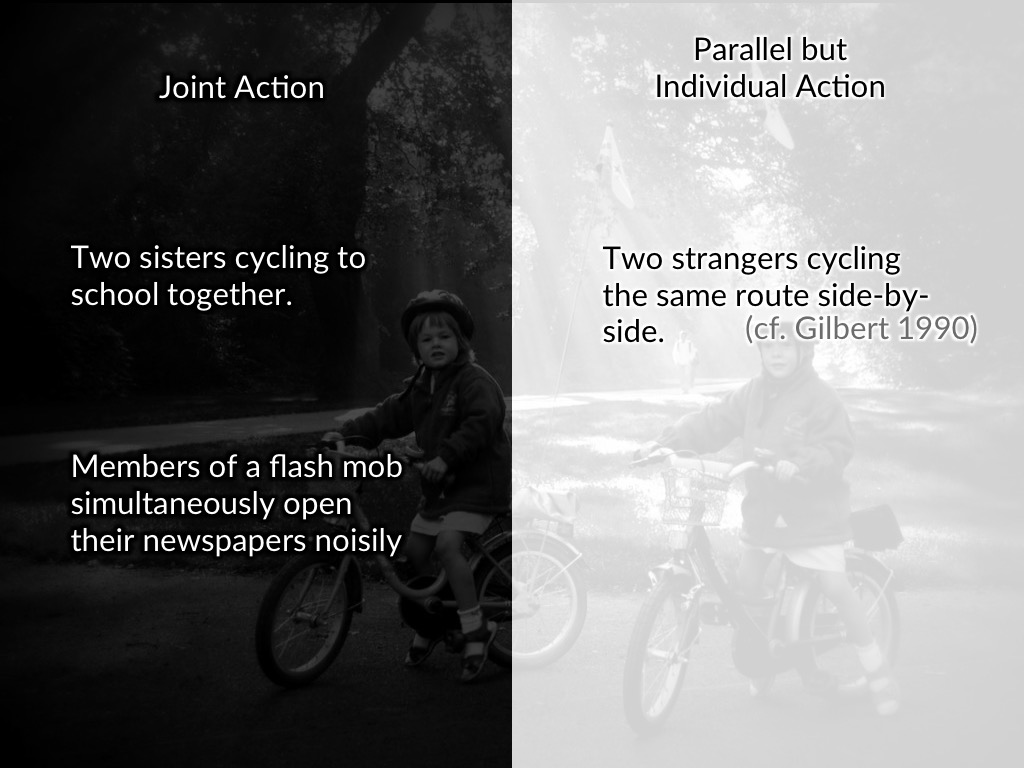Click here and press the right key for the next slide.
(This may not work on mobile or ipad. You can try using chrome or firefox, but even that may fail. Sorry.)
also ...
Press the left key to go backwards (or swipe right)
Press n to toggle whether notes are shown (or add '?notes' to the url before the #)
Press m or double tap to slide thumbnails (menu)
Press ? at any time to show the keyboard shortcuts
The Question


‘What events in the life of a person reveal agency; what are his [sic] deeds and his doings in contrast to mere happenings in his history; what is the mark that distinguishes his actions?’
(Davidson, 1971, p. 43)
[joint action] What distinguishes doing something jointly with another person from acting in parallel with them but merely side by side?





Give another contrast pair.



Question
What distinguishes joint actions from parallel but merely individual actions?
Requirement
Any account of shared agency must draw a line between joint actions and parallel but merely individual actions.
Aim
Theoretical framework for psychology and formal models.
short essay question:
Why, if at all, do we need a theory of shared intention?
(Will be a while before this question makes sense.)
plan d’attaque
premise: Shared intention can only be understood as the solution to a problem.
1. What is the Problem of Joint Action? ✓
2. Can we solve the Problem without shared intention? ✓
3. If we do need shared intention, what is the best account available? ✓